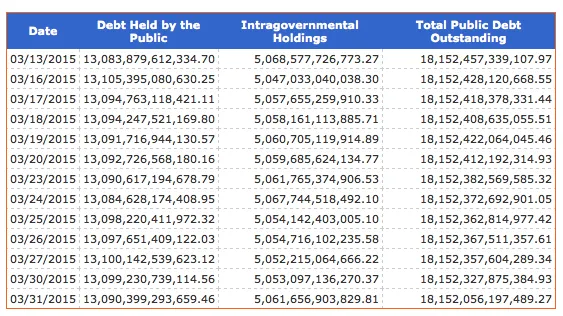"All of these candidates deny fiscal reality. In the next 10 years, revenues will need to increase by 40 percent simply to keep federal spending even, per capita, with inflation and population growth. Additional revenues will be needed to pay for health care for the elderly, transportation systems and other obligations, as well as for newer challenges, including climate change. And interest on the national debt will surely rise because interest rates have nowhere to go but up."
Who is the Times trying to kid?
Revenues have never been needed to cover expenditures and they know it, and rarely have covered expenditures. Expenditures will continue to grow whether the Times or the Republicans like it or not. They are baked into the cake of the legislation that drives them. The only way to fix that is to rescind the legislation or modify it, with its built-in cost of living increases and added population coverage assumptions.
This country has run minor annual surpluses in just twelve years since 1939, doing nothing but slowing down our present arrival at $18.2 trillion in debt.
Spare us the histrionics.
The heavy hitters when it comes to spending are:
- HHS ($1 trillion, 91% of which is Medicare and Medicaid)
- Social Security ($.96 trillion)
- Defense ($.59 trillion, protecting the world without reimbursement)
- Treasury Dept. ($.57 trillion, $.4 trillion of which is interest on the
debt overspending)
- Veterans ($.16 trillion, which does such a good job veterans die waiting for appointments)
- Agriculture ($.14 trillion, over half of which is the food stamp program).
Together those six account for 88% of federal spending, and the Times dares the Republicans even to think about reforming Social Security and Medicare, calling instead for higher taxes.
Meanwhile there's plenty else to cut just by axing all the other departments which account for the remaining $.48 trillion making up the 2015 fiscal outlay total of $3.9 trillion.
Let's start with the Education Dept., $76 billion, then International Assistance Programs, $22 billion.
Ka-ching! Ka-ching! You're 20% of the way there, just like that.
See how easy that was?














